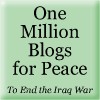False Pretenses
Following 9/11, President Bush and seven top officials of his administration waged a carefully orchestrated campaign of misinformation about the threat posed by Saddam Hussein's Iraq.
By Charles Lewis and Mark Reading-Smith
President George W. Bush and seven of his administration's top officials, including Vice President Dick Cheney, National Security Adviser Condoleezza Rice, and Defense Secretary Donald Rumsfeld, made at least 935 false statements in the two years following September 11, 2001, about the national security threat posed by Saddam Hussein's Iraq. Nearly five years after the U.S. invasion of Iraq, an exhaustive examination of the record shows that the statements were part of an orchestrated campaign that effectively galvanized public opinion and, in the process, led the nation to war under decidedly false pretenses.
On at least 532 separate occasions (in speeches, briefings, interviews, testimony, and the like), Bush and these three key officials, along with Secretary of State Colin Powell, Deputy Defense Secretary Paul Wolfowitz, and White House press secretaries Ari Fleischer and Scott McClellan, stated unequivocally that Iraq had weapons of mass destruction (or was trying to produce or obtain them), links to Al Qaeda, or both. This concerted effort was the underpinning of the Bush administration's case for war.
It is now beyond dispute that Iraq did not possess any weapons of mass destruction or have meaningful ties to Al Qaeda. This was the conclusion of numerous bipartisan government investigations, including those by the Senate Select Committee on Intelligence (2004 and 2006), the 9/11 Commission, and the multinational Iraq Survey Group, whose "Duelfer Report" established that Saddam Hussein had terminated Iraq's nuclear program in 1991 and made little effort to restart it.
In short, the Bush administration led the nation to war on the basis of erroneous information that it methodically propagated and that culminated in military action against Iraq on March 19, 2003. Not surprisingly, the officials with the most opportunities to make speeches, grant media interviews, and otherwise frame the public debate also made the most false statements, according to this first-ever analysis of the entire body of prewar rhetoric.
President Bush, for example, made 232 false statements about weapons of mass destruction in Iraq and another 28 false statements about Iraq's links to Al Qaeda. Secretary of State Powell had the second-highest total in the two-year period, with 244 false statements about weapons of mass destruction in Iraq and 10 about Iraq's links to Al Qaeda. Rumsfeld and Fleischer each made 109 false statements, followed by Wolfowitz (with 85), Rice (with 56), Cheney (with 48), and McClellan (with 14).
The massive database at the heart of this project juxtaposes what President Bush and these seven top officials were saying for public consumption against what was known, or should have been known, on a day-to-day basis. This fully searchable database includes the public statements, drawn from both primary sources (such as official transcripts) and secondary sources (chiefly major news organizations) over the two years beginning on September 11, 2001. It also interlaces relevant information from more than 25 government reports, books, articles, speeches, and interviews.
Consider, for example, these false public statements made in the run-up to war:
- On August 26, 2002, in an address to the national convention of the Veteran of Foreign Wars, Cheney flatly declared: "Simply stated, there is no doubt that Saddam Hussein now has weapons of mass destruction. There is no doubt he is amassing them to use against our friends, against our allies, and against us." In fact, former CIA Director George Tenet later recalled, Cheney's assertions went well beyond his agency's assessments at the time. Another CIA official, referring to the same speech, told journalist Ron Suskind, "Our reaction was, 'Where is he getting this stuff from?' "
- In the closing days of September 2002, with a congressional vote fast approaching on authorizing the use of military force in Iraq, Bush told the nation in his weekly radio address: "The Iraqi regime possesses biological and chemical weapons, is rebuilding the facilities to make more and, according to the British government, could launch a biological or chemical attack in as little as 45 minutes after the order is given. . . . This regime is seeking a nuclear bomb, and with fissile material could build one within a year." A few days later, similar findings were also included in a much-hurried National Intelligence Estimate on Iraq's weapons of mass destruction — an analysis that hadn't been done in years, as the intelligence community had deemed it unnecessary and the White House hadn't requested it.
- In July 2002, Rumsfeld had a one-word answer for reporters who asked whether Iraq had relationships with Al Qaeda terrorists: "Sure." In fact, an assessment issued that same month by the Defense Intelligence Agency (and confirmed weeks later by CIA Director Tenet) found an absence of "compelling evidence demonstrating direct cooperation between the government of Iraq and Al Qaeda." What's more, an earlier DIA assessment said that "the nature of the regime's relationship with Al Qaeda is unclear."
- On May 29, 2003, in an interview with Polish TV, President Bush declared: "We found the weapons of mass destruction. We found biological laboratories." But as journalist Bob Woodward reported in State of Denial, days earlier a team of civilian experts dispatched to examine the two mobile labs found in Iraq had concluded in a field report that the labs were not for biological weapons. The team's final report, completed the following month, concluded that the labs had probably been used to manufacture hydrogen for weather balloons.
- On January 28, 2003, in his annual State of the Union address, Bush asserted: "The British government has learned that Saddam Hussein recently sought significant quantities of uranium from Africa. Our intelligence sources tell us that he has attempted to purchase high-strength aluminum tubes suitable for nuclear weapons production." Two weeks earlier, an analyst with the State Department's Bureau of Intelligence and Research sent an email to colleagues in the intelligence community laying out why he believed the uranium-purchase agreement "probably is a hoax."
- On February 5, 2003, in an address to the United Nations Security Council, Powell said: "What we're giving you are facts and conclusions based on solid intelligence. I will cite some examples, and these are from human sources." As it turned out, however, two of the main human sources to which Powell referred had provided false information. One was an Iraqi con artist, code-named "Curveball," whom American intelligence officials were dubious about and in fact had never even spoken to. The other was an Al Qaeda detainee, Ibn al-Sheikh al-Libi, who had reportedly been sent to Eqypt by the CIA and tortured and who later recanted the information he had provided. Libi told the CIA in January 2004 that he had "decided he would fabricate any information interrogators wanted in order to gain better treatment and avoid being handed over to [a foreign government]."
The false statements dramatically increased in August 2002, with congressional consideration of a war resolution, then escalated through the mid-term elections and spiked even higher from January 2003 to the eve of the invasion.



























